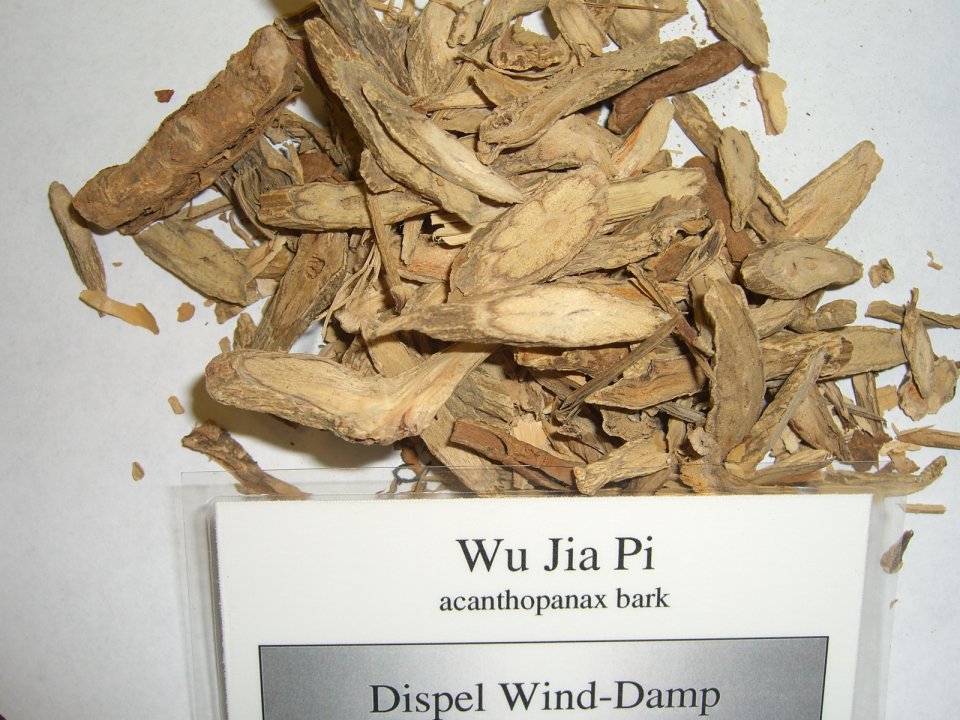Wu Jia Pi

  | Wu Jia Pi in TCM:Explore the properties of Wu Jia Pi according to Chinese
Nutrition and Traditional Chinese Medicine (TCM):
Factoids:
English Name: acanthopanax, acanthopanax root bark
Pharmacuetical Name: Cortex Acanthopanacis
Properties: acrid, bitter, warm
Temperature: warm
Channels: KD, LV
Flavors: bitter, pungent
Special Properties:
clears damp, resolves water accumulations, disperses wind
Alternate Forms:
- Bei Wu jia Pu (aka Xiang Jia Pi) is sometimes used
as a substitute for Wu Jia Pi, and both have a similar appearance and
smell. However these two herbs have different functions and should not
be used interchangeably. Bei Wu jia Pi has cardiotonic and diuretic
functions, is toxic, and should be prescribed in small dosages.
Actions / Indications:
- Dispel Wind-Damp; strengthens bones and sinews (chronic
painful bi: wind-damp cold with chronic LV and KD deficiency; muscle
aches and pains, spasma and cramps due to LV / KD deficiency, muscle
atrophy, weak or soft sinews or bones in elderly; motor delays in children)
- Promotes urination; relieves edema (dysuria, urinary
difficulty, edema, damp-cold leg qi)
Special Notes:
- Wu Jia Pi and Sang Ji Sheng both tonify
LV and KD, but Sang Ji Sheng calms the restless fetus while Wu Jia Pi
reduces edema through urination.
Disclaimer: In accordance with our terms of service, by using this web site you agree that none of the information found on this web site constitutes medical advice. You should always consult your doctor before trying any particular food or herbal remedy to treat disease.
Folk remedies presented on this site are designed to address specifc TCM diagnoses, and are not one-size-fits-all. If you would like to learn more about Traditional Chinese Medicine (TCM) and how it relates to Chinese Nutrition, you can book in a free call with a licensed professional. There is no obligation to purchase.
[CLICK HERE for your free INITIAL CONSULTATION] |

